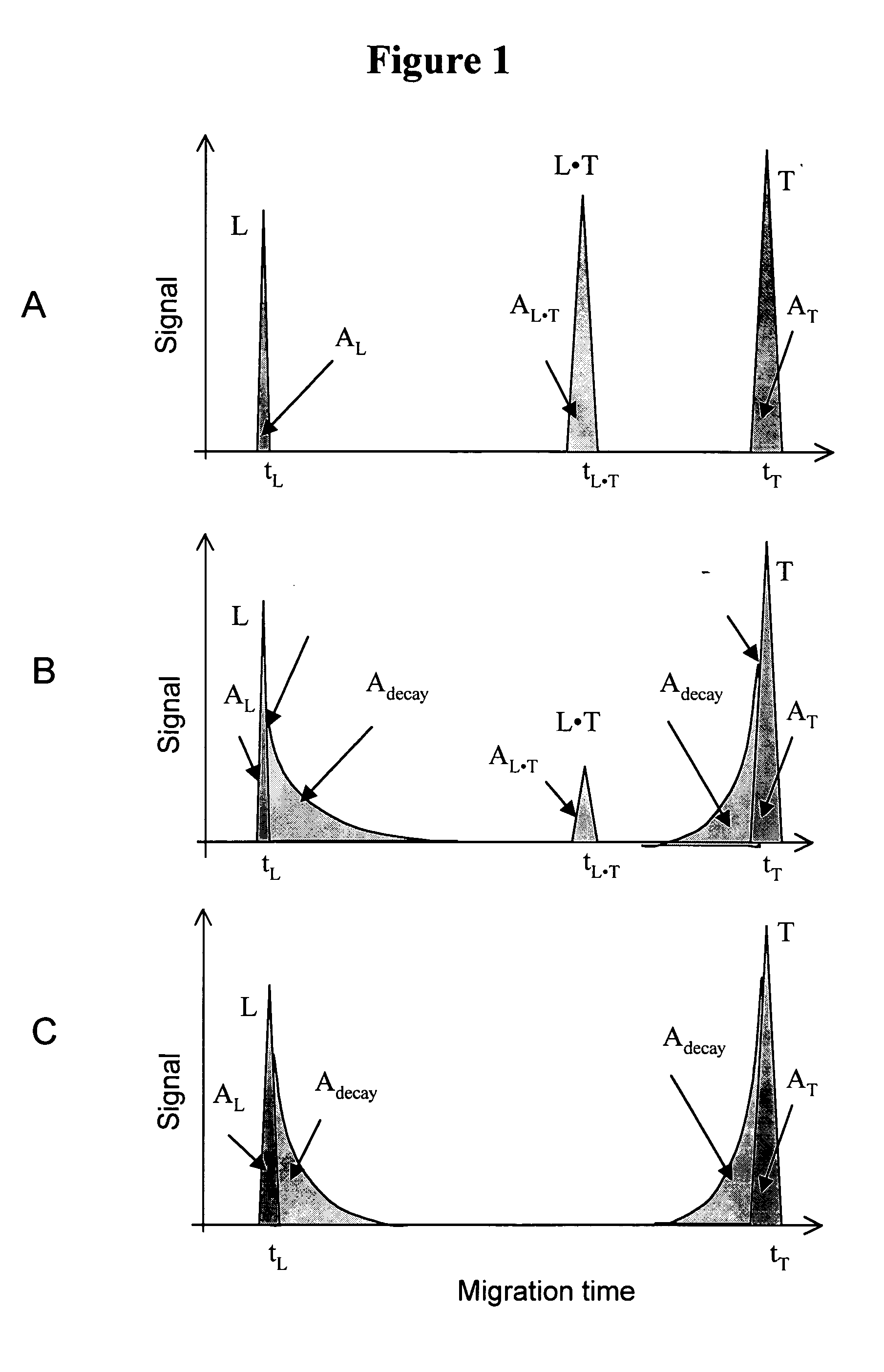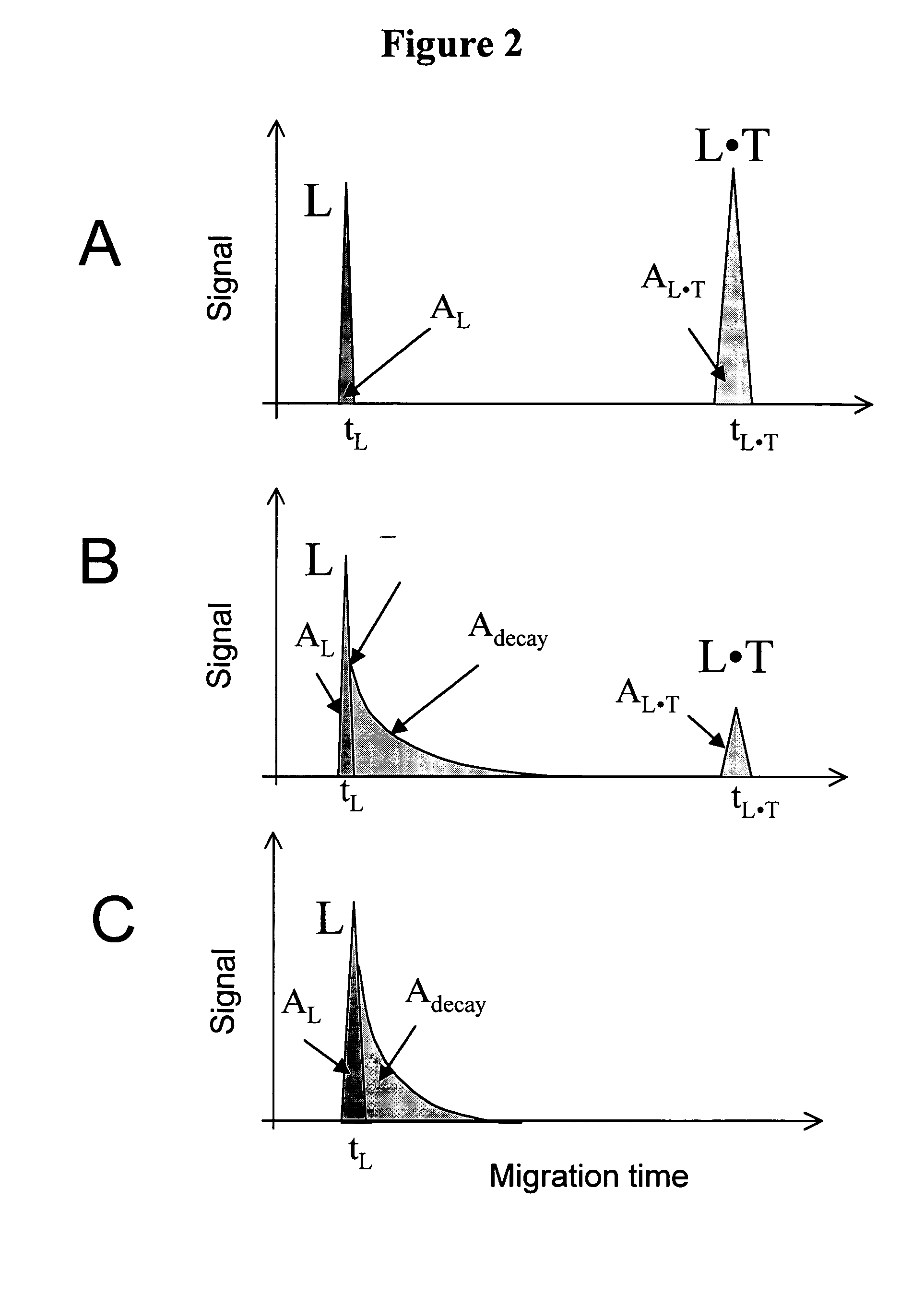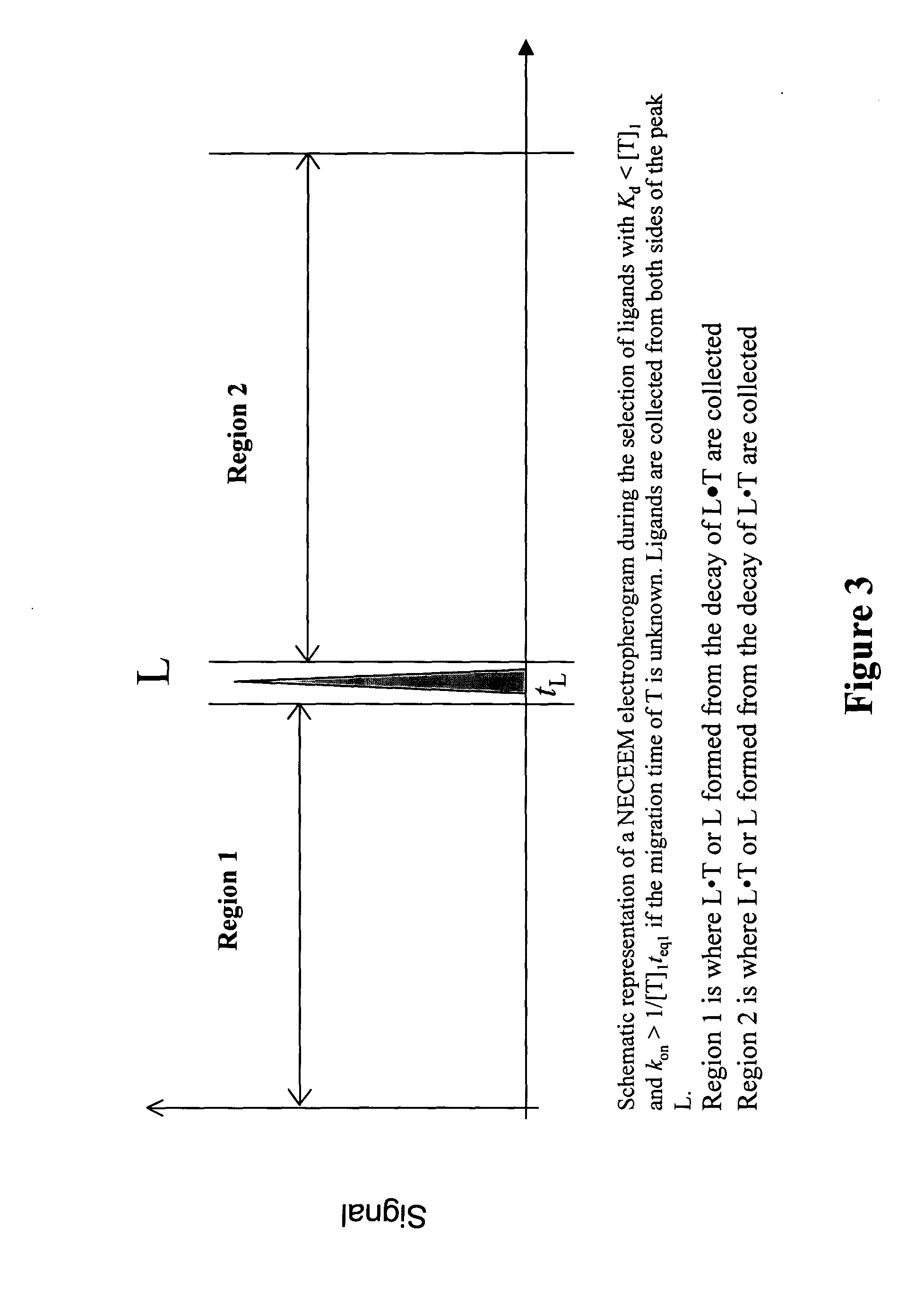Non-equilibrium capillary electrophoresis of equilibrium mixtures (NECEEM) - based methods for drug and diagnostic development
a technology of equilibrium mixture and capillary electrophoresis, which is applied in the field of non-equilibrium capillary electrophoresis of equilibrium mixture, can solve problems such as complex and rate of decay, and achieve the effect of enhancing the electrophoretic separation of components
- Summary
- Abstract
- Description
- Claims
- Application Information
AI Technical Summary
Benefits of technology
Problems solved by technology
Method used
Image
Examples
example 1 (fig.1)
Example 1 (FIG. 1)
Schematic illustration for the determination of Kd and koff values by NECEEM when both L and T are detectable. Panels A, B, and C correspond to low, intermediate and high koff values, respectively.
Panel A. When koff is low, koff<<1 / tL●T, then the complex does not decay during its migration through the capillary. NECEEM then converges into an ordinary equilibrium CE. In an ordinary equilibrium CE, three peaks are observed, corresponding to L, L●T, and T with normalized areas AL, AL●T, and AT, respectively. The areas of the peaks represent the equilibrium fractions of L, L●T, and T. The value of Kd can be found using equation 4. In order to determine the value of koff, the retention time of L●T in the capillary should be increased to transform the ordinary equilibrium CE into NECEEM. This can be achieved by changing a number of parameters, such as, but not limited to: run buffer components, run buffer ionic strength, run buffer pH, electric filed, and ca...
example 2 (fig.2)
Example 2 (FIG. 2)
Theoretical illustration for the determination of Kd and koff values by NECEEM when only L is detectable. Panels A, B and C correspond to low, intermediate, and high koff values, respectively.
FIG. 2 schematically exemplifies the important features in a NECEEM electropherogram when only L is detectable (e.g. a fluorescence detector is used and only L has a fluorescent label). A similar approach is applicable when only T is detectable. If only L is detectable, the T peak is not present in the electropherograms. Depending on the values of koff and the migration time, tL●T, of the L●T complex, the complex decays to different degrees during its migration through the capillary.
Panel A. If koff<<1 / tL●T then no detectable decay is observed. NECEEM then converges into an ordinary equilibrium CE. In ordinary equilibrium CE, the electropherogram is comprised of two peaks corresponding to L, and L●T with normalized areas AL, and AL●T, respectively. The areas corr...
example 3 (fig.3)
Example 3 (FIG. 3)
Theoretical illustration of using a NECEEM-based method for the selection of ligands with Kd<Kdmax=[T]1 and kon>konmin=1 / [T]1teq1, when the migration time of the target is unknown.
The ligands are selected with the required upper limit of Kd and lower limit of kon. To facilitate this, the mixture of T and the sample, which contains potential ligands, is prepared and equilibrated. The concentration of the target, [T]1, and the time of mixture equilibration, teq1, are chosen to facilitate the selection of ligands with the required upper limit of Kd and lower limit of kon. The upper limit of Kd will be equal to [T]1 while the lower limit of kon will be equal to 1 / [T]1teq1. The ligands with Kd<[T]1 and kon>1 / [T]1 teq1 will be preferably bound to T, while ligands with Kd>[T]1 or kon<1 / [T]1teq1 will be preferably in a non-bound state. The mixture is subjected to NECEEM, which works as described above but which may generate a new type of electropherogram ...
PUM
| Property | Measurement | Unit |
|---|---|---|
| Temperature | aaaaa | aaaaa |
| Concentration | aaaaa | aaaaa |
| Acidity | aaaaa | aaaaa |
Abstract
Description
Claims
Application Information
 Login to View More
Login to View More - R&D
- Intellectual Property
- Life Sciences
- Materials
- Tech Scout
- Unparalleled Data Quality
- Higher Quality Content
- 60% Fewer Hallucinations
Browse by: Latest US Patents, China's latest patents, Technical Efficacy Thesaurus, Application Domain, Technology Topic, Popular Technical Reports.
© 2025 PatSnap. All rights reserved.Legal|Privacy policy|Modern Slavery Act Transparency Statement|Sitemap|About US| Contact US: help@patsnap.com



